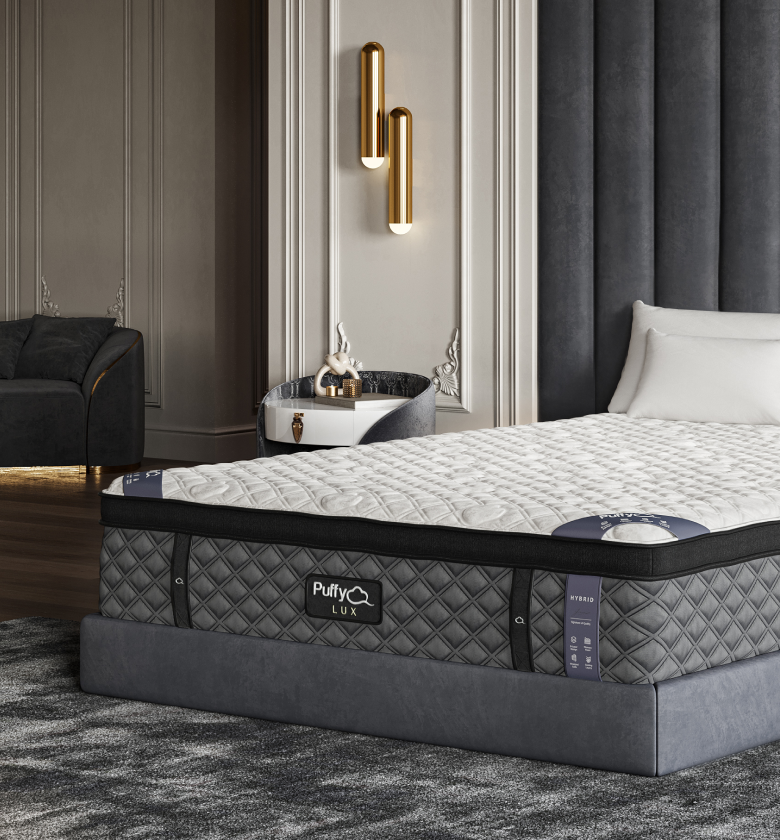With a plethora of mattress options available today, it can be challenging to determine which type is best suited for your sleep needs. Memory foam and spring mattresses are two popular choices, each offering unique advantages and drawbacks. In this blog post, we'll dive into the key differences between memory foam and spring mattresses, comparing factors such as comfort, support, durability, and more, to help you make an informed decision for your ideal sleep solution.
Memory Foam Mattresses: A Closer Look
What is a Memory Foam Mattress?
Memory foam, also known as viscoelastic foam, is a temperature-sensitive material that conforms to the body's shape when heat and pressure are applied. Memory foam mattresses are designed to provide personalized comfort and support, evenly distributing weight and reducing pressure points.
Key Advantages of Memory Foam Mattresses
- Superior pressure relief: Memory foam's ability to conform to the body helps alleviate pressure on sensitive areas such as the hips and shoulders, making it an excellent choice for those with chronic pain or sleep-related issues.
- Motion isolation: Memory foam absorbs motion, preventing it from transferring across the mattress surface. This feature makes memory foam mattresses ideal for couples or light sleepers who may be disturbed by their partner's movements.
- Hypoallergenic: Memory foam's dense structure helps resist the growth of allergens such as dust mites, mold, and bacteria, promoting a cleaner, healthier sleep environment.
Spring Mattresses: A Closer Look
What is a Spring Mattress?
Spring mattresses, also known as innerspring or coil mattresses, consist of a system of steel coils that provide support and bounce. These coils can be arranged in various configurations, such as continuous coils, pocketed coils, or offset coils, each offering unique benefits in terms of support, motion isolation, and durability.
Key Advantages of Spring Mattresses
- Affordability: Spring mattresses are generally more affordable than memory foam mattresses, making them an attractive option for budget-conscious shoppers.
- Support and responsiveness: The coil system in spring mattresses provides a responsive, supportive sleep surface that can be particularly beneficial for back and stomach sleepers.
- Breathability: Due to their open structure, spring mattresses allow for better airflow, helping to regulate temperature and prevent heat retention.
Memory Foam vs Spring Mattress: The Showdown
-
Comfort and Support
When it comes to comfort and support, memory foam and spring mattresses offer distinct experiences. Memory foam mattresses excel at pressure relief and contouring support, while spring mattresses provide a firmer, more responsive feel. The ideal choice will depend on factors such as sleep position, body weight, and personal preferences.
-
Durability and Lifespan
Memory foam mattresses typically have a longer lifespan than spring mattresses, with an average lifespan of 7 to 10 years, compared to 5 to 7 years for spring mattresses. Higher-quality materials and construction can impact the durability of both types, so it's essential to consider factors such as foam density and coil count when evaluating potential options.
-
Motion Isolation and Noise
Memory foam mattresses offer superior motion isolation compared to spring mattresses, making them a better choice for couples or light sleepers. Additionally, memory foam mattresses are virtually silent, while spring mattresses can produce noise due to the movement of coils.
-
Temperature Regulation
Spring mattresses generally sleep cooler than memory foam mattresses due to their open structure and improved airflow. However, many memory foam mattresses now incorporate cooling technologies such as gel-infused foam or open-cell structures to combat heat retention and provide a more comfortable sleep experience.
-
Price
Spring mattresses tend to be more affordable than memory foam mattresses, making them an attractive option for those on a budget. However, it's important to note that a higher price doesn't always guarantee a better sleep experience. When comparing prices, consider factors such as materials, construction, and warranty to ensure you're getting the best value for your money.
Hybrid Mattresses: A Compromise Worth Considering
If you're torn between memory foam and spring mattresses, a hybrid mattress may offer the perfect solution. Hybrid mattresses combine the best of both worlds, featuring a memory foam or latex comfort layer over a supportive innerspring base. This design provides the pressure relief and motion isolation of foam, along with the support and breathability of innerspring coils.
Conclusion: Which mattress is better, Memory foam or spring?
When it comes to choosing between a memory foam and a spring mattress, there's no one-size-fits-all answer. Each type offers unique benefits and drawbacks; the ideal choice will depend on your needs, preferences, and budget.
By understanding the critical differences between memory foam and spring mattresses, you can make a more informed decision and invest in a sleep solution that will provide restful, rejuvenating slumber for years to come.
Check out what is a memory foam mattress and uncover what makes them so popular.

- Award-Winning Comfort
- Lifetime Warranty
- 101-Night Sleep Trial
- Free Shipping in 1 - 2 Days
- Assembled in USA












